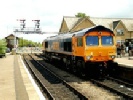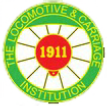Archive Section




© Ian Tipper
When residents of Bromsgrove opened their Bromsgrove, Droitwich and Redditch Weekly Messenger on Saturday 7th February 1920, they would have found on page 6 (under the heading of ‘Local Notes’), a small article about a new powerful engine being tested on the nearby Lickey Incline. It doesn’t give the number of the engine (2290), and of course, it didn’t have an official name to start with.
It described it as a Leviathan, an engine of a larger and more powerful type than the old ones, and with a large firebox and running on sixteen wheels. It said the newcomer is calculated to do the work of two of the old model and it is expected to effect a saving in time and labour.
The sixteen wheels of course include those of the tender, which had six, and the engine having ten. It was known as a Decapod. It was the only 0-
Many Bromsgrove residents, and particularly those living in Aston Fields, would have already known about the engine, as many of them worked on the railway.
The tests were a success and the engine banked trains for the next 36 years. It did go to the midland main line in 1924 to be tested with coal trains between Wellingborough and Brent Sidings in Cricklewood, but apart from visits to Derby for overhaul, she remained at Bromsgrove for her entire railway life.
With a tractive effort of 43,313lbs she was more than twice as powerful as the smaller engines. In 1921 she was fitted with a powerful headlamp to assist in buffering up to the rear of trains. Also in 1921 she was converted to oil during a miners strike, and again in 1926.
The following year the tender sides were cut down to improve visibility.
A spare boiler No.5395 was made in 1922 so as to shorten the time it spent at Derby and was first fitted to the engine in November 1923 replacing the original No.4886.
When built she had steam reversing gear, but this was changed to a manual design in 1938.
According to the locomotive history cards at the National Railway Museum in York, she was renumbered 22290 in w/e 27/9/1947 and then to 58100 in w/e 29/1/1949.
She was withdrawn in 1956 and sent to Derby for the last time, but was not immediately broken up. Some boiler cladding was removed, but then replaced so she could star at a forthcoming open day. She was officially withdrawn from stock in w/e 19/5/1956 and the official date when she was broken up was on 6/4/1957.
If you didn’t get to see Big Bertha there is a short clip on You Tube.
We are also lucky to have a number of men still with us that worked on the engine and my experience is that they are only too pleased to talk about their time banking with “Bertha”.